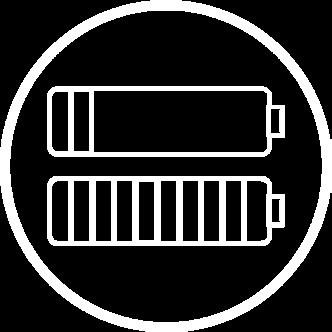County Lines: Reality, Not Just Drama
What can you do to Reduce your Carbon Footprint
What Walking 10k Steps a Day does for your Health





County Lines: Reality, Not Just Drama
What can you do to Reduce your Carbon Footprint
What Walking 10k Steps a Day does for your Health




You may not have heard the term before, but you have more than likely come across county lines through a whole host of streaming platforms and TV programmes such as Top Boy and Line of Duty. Whilst these programmes may dramatise the criminal nature of county lines, the reality is all around us on a daily basis and is far less glamourous.
So, what exactly is ‘county lines’
County lines is the organised criminal distribution of drugs from big cities into smaller towns and rural areas. County lines organisations use exploitation to engage children and vulnerable people as ‘runners’ within the network, delivering and moving drugs, and also to carry out other roles. The networks predominantly focus on distribution of so called ‘hard drugs’ such as heroin, cocaine, and amphetamines, although occasionally cannabis is also moved in this way. Disposable or ‘burner’ mobile phones are used to take orders. These are known as ‘deal lines’.
County lines is linked to a number of other criminal activities such as:
Gang violence and activity
Weapons/firearms related crime
Criminal and sexual exploitation
Modern slavery
1000
INDIVIDUALLY BRANDED ‘COUNTY LINES’ ACROSS THE UK
15% WHERE DO COUNTY LINES ORIGINATE FROM? 9% 7% METROPOLITAN POLICE FORCE AREA WEST MIDLANDS POLICE FORCE AREA MERSEYSIDE POLICE FORCE AREA
2000
‘DEAL LINES’ LINKED TO THESE ‘COUNTY LINES’
91% OF INDIVIDUALS LINKED TO COUNTY LINE OFFENDING ARE MALE
(Source: National Crime Agency)
As described earlier, children and other vulnerable people are most at risk from exploitation, however vulnerabilities can come in various forms. Any vulnerability is a potential target, and this means that there is a broad profile for potential victims.
Whilst children as young as 12 have been identified as potential victims of exploitation by county lines organisations, the majority of referrals relate to males aged 15-16, a far narrower band.
Children who live in poverty, are excluded from school, attend Pupil Referral Units or have involvement with social services are commonly targeted as they often respond to the material rewards such as cash, mobile phones and trainers/clothing as well as being attracted by the sense of belonging. That being said, children from more stable backgrounds are also targeted as they are far less likely to appear on any official agency’s radar, including the police, therefore reducing likelihood of detection.
It is easy to assume that only vulnerable individuals with learning and developmental disabilities are at risk of exploitation. Whilst this is a key vulnerable group, individuals suffering mental health conditions, substance addiction, homelessness, in debt bondage and with previous experiences of abuse and neglect, are also at risk.
Once exploited, vulnerable adults may not necessarily carry out a “runner” role for the criminal organisation - they are particularly susceptible to a practice called “cuckooing”. Cuckooing is where drug dealers take over the home of a vulnerable person in order to use it as a base for county lines drug trafficking. These houses may then also be used for other crime such as the sexual exploitation of girls and young women and the storage of illegal weapons and money.
A young or vulnerable person’s involvement in county lines activity often leaves signs. A person might exhibit some of these signs, either as a member or as an associate of a gang dealing drugs.













The key to preventing county lines exploitation is no different to preventing many other kinds of safeguarding concerns; education, vigilance, reporting and support.

Educating vulnerable groups in an age/capacity appropriate way and also their support network/ carers
Remaining vigilant for the signs described, but especially for changes in behaviour and circumstances
Seek support to have the difficult conversations and find out what support is available for the individual concerned

visit the UK Government’s Website


If you have concerns that someone you know may be being criminally exploited or is at risk of any form of exploitation, please contact the Safeguarding Team by filling out the contact form via “Report a Safeguarding Concern” button on the t2 group website or emailing safeguarding@t2group.co.uk
Safeguarding
Whilst Safeguarding is everyone’s responsibility, there are some staff within t2 group who have specific responsibilities for Safeguarding.




Preston
If you just require general advice and guidance, you can also email the Safeguarding and Prevent team on safeguarding@t2group.co.uk
Our homes in the UK contribute about 22% of the nation’s carbon emissions, including those from heating, lighting, and appliances. The amount of carbon emissions created by the way we travel, including driving to work or the superstore or flying around the world on vacation, is second only to heating.
By implementing tiny behavioural changes, choosing low-carbon transportation options, and renovating our homes, we can lower our carbon emissions while also making a difference in the fight against the climate emergency. Here, we look at solutions for various budgets and lifestyles, such as changing your heating settings, switching to LED lightbulbs, or buying an electric car.
For most of us, the first step in cutting carbon emissions is to take control of our heating. We can reduce our carbon emissions and energy usage by making sure we’re not using more heating than we need.
Heating controls are evolving rapidly and investing in modern, easy to use controls is a good way to make sure you’re only using heating when necessary. To do this effectively, for a central heating system you’ll need a timer or programmer, a room thermostat and thermostatic radiator valves.
Smart heating controls are available for all types of heating systems, including electric storage heaters. Some systems include automation features, which can help by working out exactly when to turn the heating on and off.
All the energy we use in our homes leads to additional carbon emissions. Over half of home energy is used for heating, so it’s important to make sure that the walls, roof, and floors in your home are insulated, cutting back on heat waste and reducing your carbon footprint.
If you want a quick remedy, insulate any exposed hot water lines and, if you have one, your hot water storage tank. Your home will be warmer in the winter, your energy bills will go down, and your carbon footprint will decrease if you insulate the building itself.
Insulating your walls is a good place to start, as around a third of the heat lost from an uninsulated home escape through the walls. The cost of insulating walls depends on what type of home you have: homes with a cavity wall (typically built after about 1920) are the easiest to insulate, while older homes will require solid wall insulation.
Your house may be losing heat up your chimney, through spaces between the floorboards, and around the windows and doors. A practical method to conserve energy and cut your household’s carbon emissions is to draught-proof these places. It’s simple to do and, in many instances, doesn’t call for a specialist.
Lighting is one of the big success stories of home energy efficiency. A modern LED bulb uses 80-90% less energy than a traditional lightbulb, which helps to lower your carbon emissions and electricity bills.
If you replace all the bulbs in your home with LED lights, you could reduce your carbon dioxide emissions by up to 65kg a year. This is equivalent to the carbon dioxide emitted by driving your car around 220 miles.
Since the first Covid-19 lockdown began in March 2020, many people across the UK have reduced their transport emissions by switching to walking or cycling over short distances. However, as restrictions have eased and people start to travel more freely, it’s likely these carbon emissions will begin to creep up.
There are around 67 million people in the UK. If we all continue as we are, climate change will get worse. But if we each reduce our own energy consumption, even just a little, that would add up to a huge reduction in our national carbon emissions.
Taking control of our energy consumption and reducing our own emissions is a positive step towards keeping our planet safe for future generations.
10,000 daily steps is now a common fitness target. Here are just a few of the health advantages that increasing your physical activity will bring you.
A smart method to get yourself moving more and reduce the amount of time you spend sitting is to set a goal of 10,000 steps per day (or any other figure that poses a challenge based on your current activity level). It can therefore significantly affect practically every portion of your body. Here are 7 of the greatest health advantages of 10,000 daily steps of walking.

You may strengthen your lungs and surrounding muscles by exercising daily. Your body’s capacity to use oxygen effectively increases together with the pace and volume of oxygen you inhale (this is measured as your “VO2 max”). Your VO2 max increases as you get more fit.
Physical activity boosts the release of feel-good hormones (like endorphins) and also increases blood flow to the brain, which results in improved cognitive function. Not only do you feel less stressed and anxious when you regularly move, but you are also working toward improving your creativity, productivity and concentration.

Physical activity (particularly weight-bearing exercises) places extra stress on your bones, which helps improve their density and lowers your risk for osteoporosis later in life. Walking, and better yet running, are great places to start.

When you exercise, your muscles use more of the bloodstream’s glucose, lowering your blood sugar for up to 24 hours afterward. Exercise also enhances the effectiveness of the insulin in your body.

High blood pressure can be prevented and managed by physical activity. Taking your recommended 10,000 steps each day can help to loosen up your blood vessels and improve blood flow.


Physical activity helps improve your flexibility, which in turn, helps improve posture, reduces risk for injury, and also decreases the number of aches and pains you feel during the day.
Physical activity is a great way to boost energy levels and fight fatigue as it strengthens the heart and improves circulation.

As the 40th monarch to be crowned in Westminster Abbey, the oldest in history, and with coronation traditions in place for nearly 1,000 years, the pressure had been on – not just to get the Coronation right, but to make it meaningful and memorable for a 21st-century audience. As this was the first Coronation to be staged for 70 years, a period during which Britain and the world had undergone irrevocable change, no one involved in the Coronation organising in 2023 had hands-on experience of the last Coronation in 1953. It involved months of round-the-clock planning by The King and The Queen, the Palace, Lambeth Palace, the armed forces, the government, the police, broadcasters and many more.

Britain is famed for its pageantry, pomp and ceremony and this Coronation put Britain in the limelight the nation thrives on. But there was a genuine desire to make the day inclusive. Peers of the realm did not pay homage for the first time, and most were not even invited.
Preference was given to meritocracy over aristocracy and the diverse mix of faces composed a very different congregation to that present at The King’s mother’s Coronation. It was of course a fully Christian and Protestant liturgy, but the Ceremony incorporated multi-
faith and multi-language elements, with representatives of different faith groups playing an active role in presenting regalia.
The King promotes inclusivity and diversity as he recited and signed the Coronation Oaths (with no leaky pens in sight!)
One of the central moments of the Coronation ceremony and also one of the few instances where traditions were adapted to include the wishes of the King for a more inclusive vision of the monarchy and his role.
The first Oath to King Charles III one was the one in which the new, more inclusive formula was inserted. The Archbishop of Canterbury asked King Charles: “Your Majesty, the Church established by law, whose settlement you will swear to maintain, is committed to the true profession of the Gospel and, in so doing, will seek to foster an environment in which people of all faiths and beliefs may live freely. The Coronation Oath has stood for centuries and is enshrined in law. Are you willing to take the Oath?” to which the King responded: “I am willing.”
This inclusion of “people of all faiths and beliefs” represents an extraordinary novelty and was added upon the express desire of His Majesty, who wished to convey a monarchy that, while not changing its fundamental principles and core values, is adapting to the inevitable truth that the United Kingdom and the Commonwealth are home to an increasingly diverse range of people.





This was also reflected in the extraordinary opening of the entrance procession in Westminster Abbey with leaders of different faiths and the stop that the King made before exiting the Abbey to receive a short blessing from leaders of Jewish, Muslim, Hindu, Sikh and Buddhist religions.


